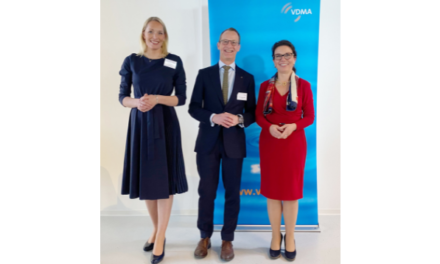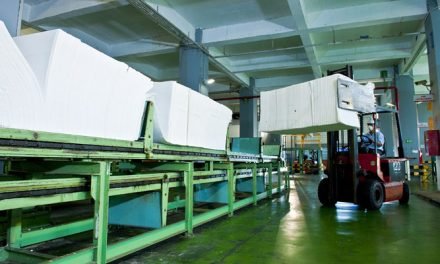In the second part of its African success story, flat knitting machine manufacturer Stoll outlines the company’s’ accomplishments in Madagascar and Kenya. Flat knitting machine builder Stoll has spent more than 40 years building up its business in key markets across Africa. Stoll’s business activities across the vast African continent have seen the Reutlingen, Germany-based firm support knitwear production in a number of different markets.
Prime examples of this success can be found in very different regions ranging from North to South and from East Africa to the islands of the Indian Ocean. Madagascar, compared to the long flat knitting history of Mauritius, is a relatively new player in the business. The main hub is in the capital Antananarivo. But with Antsirabe, 4 hours’ drive South of Tana, the second city is becoming increasingly important for the textile industry.
Madagascar is still dominated by the hand flat knitting industry. You will find purely locally owned companies as well as Mauritian, Chinese, Italian, French and Dutch owned companies. And wherever foreign ownership is involved, electronic machines play a more and more important role. Currently, even with local salaries still at a low level, Stoll’s European and Mauritian customers agree that investment in electronic machines is becoming increasingly profitable compared to working on hand flats. A high absence rate of employees, as well as long production times for complicated patterns, make it difficult to have a continuous and fast output on hand flat machines. The investment in Stoll machines is, therefore, increasing each year. Stoll customers in the region mainly opt for the 2- and 3-system compact machines that give them an optimum level of productivity for an attractive price. 2017 even saw the first Stoll ADF (independent direct feeding) machines coming to the market.
As one of the region’s Dutch customers, and proud owner of these machines notes, “You always have to show your buyers/customers something special in your collection. Even if it is not yet the right time for these kinds of designs and products, you have to be ahead of your competition.” The customer also strongly believes that the designs that can be realised on the ADF machines which will hit the market soon. The first swatches shown at international yarn and fabric exhibitions have already strengthened this belief. Coming back to the city of Antsirabe, textile producers are building new factories to make use of even cheaper labour. But, as already mentioned, cheap labour does not automatically provide a desired output. In general, you have to train more people over a longer period of time to finally get what you need.
Today, Stoll has one huge customer with a facility installation complete and a second one building up the factory to be operational by the end of 2018. A large quantity of Stoll machines has already been proposed for that project.”The main countries active in the region are France, Germany, the US and South Africa,” says Stoll. “If the local government will invest more money in infrastructure programs such as new roads, airports and hotels, we will definitely see a steep increase in economic growth. Stoll is present and our customers deeply appreciate the service.”
Back on the mainland, Kenya has become the largest garments exporter in the sub-Saharan area followed by Lesotho, Mauritius and Ethiopia.
Kenya has a huge weaving industry and mainly produces and exports all kinds of uniforms and traditional Kikoi products (colorful wraps, scarfs). The flat knitting sector is dominated by the production of school sweaters. So far only hand flat machines and basic semi-electronic machines from China and India were/are used for school sweater manufacturing. Now, as living standards rise, high quality school uniforms are in great demand. One of the major reasons for the company’s success in this market, says Stoll, is that it began selling electronic machines here in the early 1980s.
The customer from that time is still in the business and can be regarded as something of a pioneer for all flat knitters in Kenya. Today, Stoll has a very sound customer base in the East African country, all producing high quality school sweaters on the latest CMS HP (High Productivity) machines. As Stoll customers point out, “the CMS is the easiest machine in the market to operate.” At the first purchase, all customers receive training from Stoll’s technical department. This specialised training allows the local technicians to respond to all demands in the most effective way possible.
“This training makes Stoll unique in the market,” the company says. “There is no other supplier of electronic flat knitting machines offering this service, another important reason why customers are opting for Stoll.” Stoll also notes that as flat knitted fashion items are up to now mainly imported as new or second hand, this sector has been somewhat neglected by local producers. In reality there are very few Kenyan knitwear brands or fashion boutiques. However, with the assistance of Stoll, by recommending special fashion trade-fairs, yarn suppliers and potential buyers, the potential customers are starting to enter this field. “Locals are eagerly waiting for fashion items, suitably priced and made in Kenya,” says Stoll. “Something you would not have expected is that even shoe uppers are produced in Kenya on our machines. Stoll customers, supplying school uniforms and/or traditional Kenyan garments, see this as a new and huge opportunity to open up a new business field.”
Economically, Kenya is also moving ahead, a factor, which underpins the growth of the local knitwear market. The new railroad between Mombasa and Nairobi is helping local entrepreneurs to ship goods in a much faster way to the next seaport and, from there, to Europe or the US. “Kenya is also moving ahead with Stoll,” the company said.






















